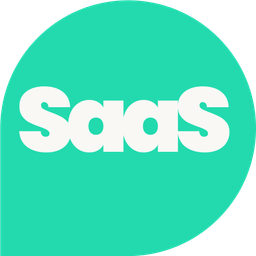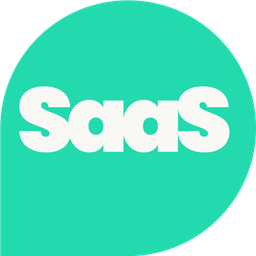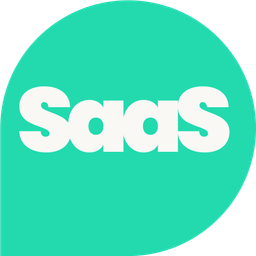The financial impact of inaccurate data-driven SaaS marketing on any given business is substantial. According to research by Gartner, poor-quality data costs organizations an average of $15 million annually.
In my opinion, for SaaS companies, good marketing data is mightier for brand awareness, brand engagement, and customer acquisition and retention.
Considering below use cases, businesses could face revenue loss of millions of dollars, depending on the scale and nature, on top of jeopardizing their brand image.
- Lead generation and conversion: For SaaS companies, accurate data is crucial for lead generation, nurturing, and conversion. Forrester found that 25% of the average B2B database is inaccurate, which can lead to significant losses in potential revenue. If a SaaS company’s marketing data is inaccurate or outdated, it could result in targeting the wrong audience, ineffective marketing campaigns, and lost opportunities to convert leads into customers.
- Customer retention and churn: Bad data can also lead to poor customer experiences, which can increase churn rates. In the SaaS industry, where recurring revenue is critical, losing customers to competitors due to poor marketing or customer service driven by bad data can be particularly damaging.
- Competitor impact: This interesting report from McKinsey & Company estimated that companies with better data and analytics are 23 times more likely to acquire customers and 19 times more likely to be profitable.
That being said, SaaS businesses with bad marketing data are at a significant disadvantage compared to competitors who leverage accurate, actionable data.
So how can businesses leverage data driven SaaS marketing analytics for success?
"Data and analytics leaders need to understand the business priorities and challenges of their organization. Only then will they be in the right position to create compelling business cases that connect data quality improvement with key business priorities," explains Ted Friedman, Vice President at Gartner.
Working as a marketing professional for a decade, I cannot agree more. Companies are making significant investments in tools, teams, and infrastructure to gather operational and customer data, but only a small portion can effectively leverage, scale, and prioritize this information.
Consequently, they frequently fail to capitalize on the potential to convert underutilized data into strategic wins like key insights that could strengthen current business relationships and better market features / services to win new deals.

To fully harness the power of data-driven SaaS marketing analytics for success, companies need to take a holistic approach, incorporating both the right technology and a data-driven culture. Here are some key strategies:
1. Implement a robust data management strategy
The foundation of any successful data-driven marketing strategy is accurate and organized data. This includes establishing processes for data cleaning, validation, and enrichment. By ensuring data quality, businesses can reduce waste in marketing spend, optimize targeting, and improve campaign performance.
Investing in tools that automate data cleansing, or using platforms that integrate real-time data validation, can significantly reduce the chances of operating on faulty insights.
2. Use predictive analytics for lead scoring
Predictive analytics uses historical data and AI models to forecast future customer behaviors, such as which leads are more likely to convert. For SaaS companies, this is particularly valuable in improving marketing efficiency.
By identifying high-value leads early on, marketers can focus their resources on nurturing relationships that are most likely to result in conversions, reducing wasted effort on unqualified leads.

3. Personalization through data segmentation
Leveraging customer data allows SaaS marketers to segment audiences effectively. This segmentation is the key to delivering personalized marketing content and experiences, from tailored email campaigns to customized product recommendations.
Personalization, when done well, enhances engagement and retention, contributing to lower churn rates and higher lifetime customer value (LTV).
4. Measure campaign effectiveness in real-time
SaaS companies that invest in real-time analytics can monitor the performance of their marketing campaigns as they unfold. This enables them to quickly adjust strategies and tactics to optimize outcomes.
Data-driven insights into customer interactions, conversion rates, and content engagement help marketers adapt on the fly, ensuring that campaigns remain agile and results-focused.
5. Leverage cross-channel analytics
SaaS marketing often spans multiple digital channels – from email and social media to content marketing and paid search. Tracking customer touchpoints across these channels can give marketers a full picture of the buyer's journey.
With cross-channel analytics, SaaS companies can understand which channels drive the most conversions, enabling them to allocate resources more effectively and maximize ROI.
6. Data-driven customer retention
Customer retention is crucial in the SaaS model, where revenue is primarily subscription-based. Data analytics can help identify patterns and signals that indicate potential churn, allowing businesses to proactively address customer concerns before they escalate.
By understanding the behaviors that lead to churn, SaaS companies can fine-tune their retention strategies, whether through improving customer support, offering personalized incentives, or addressing product usage issues.
7. Adopt a culture of continuous optimization
One of the greatest benefits of data-driven marketing is the ability to continuously optimize strategies. Regularly assessing the performance of campaigns, customer behavior, and market trends allows for iterative improvements.
By fostering a culture that prioritizes data insights and ongoing experimentation, SaaS companies can stay agile and competitive in a rapidly changing market.

Let’s understand this through a practical use case for a high ticket size SaaS product with below assumptions.
Company: ABC Enterprise (ERP Solutions)
Product: Full ERP Suite (Enterprise Resource Planning) solution for large enterprises
Ticket Size: $100,000+ per contract, annual subscription model
Challenge:
The company’s target market consists of large enterprises across various industries. The sales cycle is long and complex, involving multiple stakeholders and decision-makers. The company needs to improve lead generation, accelerate the sales funnel, and reduce churn for its high-ticket product.
Solution: Data-driven marketing and analytics
- Lead generation and qualification: The company uses predictive analytics and machine learning to score leads based on historical data from past deals, customer behavior on the website, engagement with marketing content, and CRM data. By applying predictive models, they can better identify which enterprise prospects are more likely to convert based on similar companies that have purchased their ERP solution in the past.
Example:
- The marketing team notices that companies within the manufacturing industry with over 1,000 employees and a specific set of technological challenges (e.g., fragmented internal systems) are more likely to convert.
- Using this insight, they create hyper-targeted marketing campaigns (personalized emails, whitepapers, case studies) focusing specifically on the needs of large manufacturers.
- This targeted approach reduces wasted ad spend and increases lead quality, shortening the sales cycle for enterprise deals.
- Personalized Account-Based Marketing (ABM): Due to the high price point, the ERP SaaS company adopts an Account-Based Marketing (ABM) strategy, using data analytics to identify key decision-makers within target companies. By using firmographic data and behavior tracking, the marketing team can craft highly personalized messages and content for different stakeholders, such as the CFO, CTO, or operations managers.
Example:
- A CFO may receive a financial benefits case study on how the ERP reduces operational costs, while the CTO gets technical documentation showing integration capabilities.
- Advanced CRM analytics track engagement with emails, webinar attendance, and website visits, helping the sales team tailor follow-ups based on individual interests.
Predictive churn analytics: The SaaS company uses data analytics to monitor product usage patterns and customer engagement. For instance, they track login frequency, the number of active users within the enterprise, and key feature adoption. By analyzing these data points, the company can predict which customers are at risk of churn.
Example:
- If a large enterprise customer hasn't logged in or used core features of the ERP solution over the past 60 days, the customer success team is alerted to intervene early. They can reach out with personalized support, offer training, or provide consulting to ensure full utilization of the platform.
- This proactive approach helps reduce churn and maintain high customer lifetime value (CLTV).
- Real-time analytics to optimize campaigns: The company leverages real-time data to track the performance of its marketing campaigns, including email open rates, webinar attendance, whitepaper downloads, and sales-qualified leads (SQLs). If certain campaigns are underperforming, they can quickly adjust messaging, change audience segmentation, or allocate more resources to better-performing channels.
Example:
- After noticing lower-than-expected engagement from their initial email campaign targeting CIOs, the marketing team revises the content to focus more on integration capabilities, which research indicates is a key concern for CIOs. This adjustment leads to a 15% improvement in open rates and more meetings booked.
Results:
- Improved lead quality: Predictive analytics enables the company to focus marketing efforts on high-value leads, reducing the number of unqualified leads entering the pipeline.
- Increased conversion rates: Personalized ABM campaigns drive higher engagement from enterprise decision-makers, leading to an increase in high-ticket deals.
- Reduced churn: By using data-driven insights to predict churn and take proactive action, the company improves customer retention and maximizes the lifetime value of each account.
- Enhanced ROI: Real-time monitoring and adjustment of marketing campaigns improve ROI by ensuring marketing dollars are spent on initiatives that deliver the most value.
A data-driven approach can enhance the performance of marketing efforts facilitating company’s long-term growth and profitability.
The success of a SaaS business depends heavily on how effectively it can collect, analyze, and act on data. Marketing teams that leverage accurate, actionable insights are not only able to drive growth through better lead generation and customer retention but also position their brand as a market leader.
By adopting a comprehensive data-driven marketing approach, SaaS companies can unlock new opportunities for revenue and long-term success.
Ultimately, SaaS companies that embrace a strategic approach to data and analytics will outperform their competitors, driving better business outcomes while minimizing risks tied to poor data quality.
Enjoyed this article? Why not sign up for exclusive insights with the leading minds in SaaS right here?






